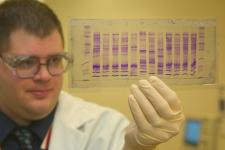Aggregated News

He roamed the streets of Sacramento for six years, raping women as they walked to work or headed home from parties in the dark.
To keep them from fighting back, he smashed their heads with rocks and wrapped his hands around their necks. Sometimes he threatened them with a gun.
The “Roaming Rapist” is one of a handful of cases that California authorities have quietly solved in recent years using a controversial technique that scours an offender DNA database for a father, son or brother of an elusive crime suspect.
The state’s early success using familial DNA searches to identify the so-called “Grim Sleeper” serial killer led Los Angeles Police Chief Charlie Beck to predict that the method would “change the way policing is done in the United States.” Civil liberty groups expressed alarm, saying the searches raised significant ethical and privacy concerns. Some questioned their legality.
Since then, familial DNA has made more modest progress than Beck predicted but has also gained wider respect. Eight other states have followed California’s lead, formally embracing the technique as a crime-fighting tool. And though many opponents still express concerns, California’s approach has won over some previous skeptics who say they are impressed with the state’s strict...



